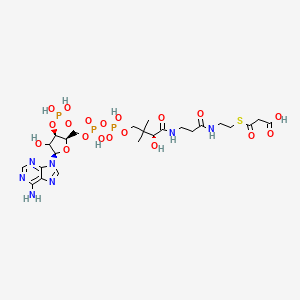| MeSH term | MeSH ID | Detail |
|---|---|---|
| Diabetes Mellitus | D003920 | 90 associated lipids |
| Adenocarcinoma | D000230 | 166 associated lipids |
| Reperfusion Injury | D015427 | 65 associated lipids |
| Diabetes Mellitus, Type 2 | D003924 | 87 associated lipids |
| Fatty Liver | D005234 | 48 associated lipids |
| Ketosis | D007662 | 13 associated lipids |
| Body Weight | D001835 | 333 associated lipids |
| Heart Failure | D006333 | 36 associated lipids |
| Prostatic Neoplasms | D011471 | 126 associated lipids |
| Hypothyroidism | D007037 | 32 associated lipids |
Lmfa07050031
Lmfa07050031 is a lipid of Fatty Acyls (FA) class. The involved functions are known as Pigment and Polymerization. The related lipids are Propionate.
Cross Reference
Introduction
To understand associated biological information of Lmfa07050031, we collected biological information of abnormalities, associated pathways, cellular/molecular locations, biological functions, related genes/proteins, lipids and common seen animal/experimental models with organized paragraphs from literatures.
What diseases are associated with Lmfa07050031?
There are no associated biomedical information in the current reference collection.
Possible diseases from mapped MeSH terms on references
We collected disease MeSH terms mapped to the references associated with Lmfa07050031
PubChem Associated disorders and diseases
What pathways are associated with Lmfa07050031
There are no associated biomedical information in the current reference collection.
PubChem Biomolecular Interactions and Pathways
Link to PubChem Biomolecular Interactions and PathwaysWhat cellular locations are associated with Lmfa07050031?
There are no associated biomedical information in the current reference collection.
What functions are associated with Lmfa07050031?
Related references are published most in these journals:
| Function | Cross reference | Weighted score | Related literatures |
|---|
What lipids are associated with Lmfa07050031?
Related references are published most in these journals:
| Lipid concept | Cross reference | Weighted score | Related literatures |
|---|
What genes are associated with Lmfa07050031?
There are no associated biomedical information in the current reference collection.
What common seen animal models are associated with Lmfa07050031?
There are no associated biomedical information in the current reference collection.
NCBI Entrez Crosslinks
All references with Lmfa07050031
Download all related citations| Authors | Title | Published | Journal | PubMed Link |
|---|---|---|---|---|
| Odland LM et al. | Skeletal muscle malonyl-CoA content at the onset of exercise at varying power outputs in humans. | 1998 | Am. J. Physiol. | pmid:9611159 |
| Winder WW et al. | Time course of exercise-induced decline in malonyl-CoA in different muscle types. | 1990 | Am. J. Physiol. | pmid:2166437 |
| Saha AK et al. | Lipid abnormalities in tissues of the KKAy mouse: effects of pioglitazone on malonyl-CoA and diacylglycerol. | 1994 | Am. J. Physiol. | pmid:8048519 |
| Noland RC et al. | Peroxisomal-mitochondrial oxidation in a rodent model of obesity-associated insulin resistance. | 2007 | Am. J. Physiol. Endocrinol. Metab. | pmid:17638705 |
| Taylor EB et al. | Long-chain acyl-CoA esters inhibit phosphorylation of AMP-activated protein kinase at threonine-172 by LKB1/STRAD/MO25. | 2005 | Am. J. Physiol. Endocrinol. Metab. | pmid:15644453 |
| Beha A et al. | Muscle type-specific fatty acid metabolism in insulin resistance: an integrated in vivo study in Zucker diabetic fatty rats. | 2006 | Am. J. Physiol. Endocrinol. Metab. | pmid:16380389 |
| Assifi MM et al. | AMP-activated protein kinase and coordination of hepatic fatty acid metabolism of starved/carbohydrate-refed rats. | 2005 | Am. J. Physiol. Endocrinol. Metab. | pmid:15956049 |
| Steinberg GR et al. | AMPK expression and phosphorylation are increased in rodent muscle after chronic leptin treatment. | 2003 | Am. J. Physiol. Endocrinol. Metab. | pmid:12441311 |
| Roepstorff C et al. | Malonyl-CoA and carnitine in regulation of fat oxidation in human skeletal muscle during exercise. | 2005 | Am. J. Physiol. Endocrinol. Metab. | pmid:15383373 |
| Frøsig C et al. | Reduced malonyl-CoA content in recovery from exercise correlates with improved insulin-stimulated glucose uptake in human skeletal muscle. | 2009 | Am. J. Physiol. Endocrinol. Metab. | pmid:19190265 |
